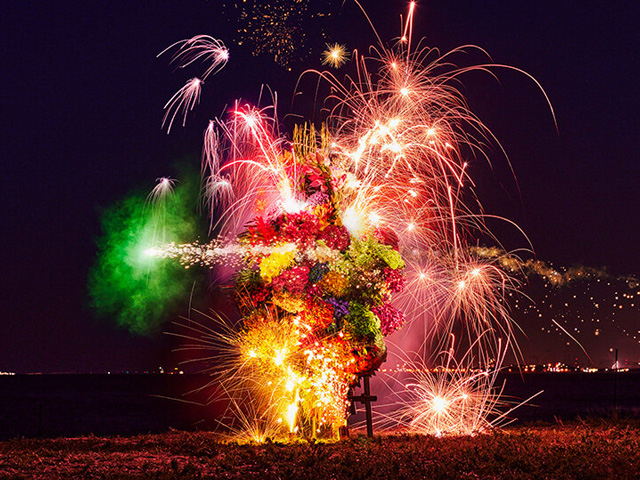TRANSFORMATIVE PARKS CHANGING AUSTRALIA
10 Nov 2016
Discover the evolution of Australia’s greatest parks and open spaces through an exhibition at the National Museum with displays of some the country’s most transformative spaces.

The role of parks and open spaces often goes beyond the most obvious concept of being a place for relaxation or recreation. When we look more deeply, these beautiful or inspiring spaces are actually a place where communities are created and cultural identity is solidified.




“Ask yourself about your favourite park and take a moment to think about what it really means to you. Often the responses you’ll hear from people are about the memories of times spent there or a nostalgia and excitement for what the space used to be, and what it has become,” Shahana McKenzie, Chief Executive Officer of the Australian Institute of Landscape Architects (AILA).
“In recent times, public projects have become more than just some nice greenery, a bench or generic playground. This revelation means open spaces take on a greater meaning. For example, they can be a place where the modern and past co-exist, a place where they can offer deep and significant cultural recognition while respecting the values of people from all walks of life. And many of our parks, through transformative design, are making an amazing contribution to the local ecosystem - by simply being there,” continued Ms McKenzie.
To celebrate how significant these parks and open spaces are, a national jury has selected 13 projects as the top parks changing Australia, forming an exhibition to be featured at the National Museum of Australia. Additionally, the jury selected 10 parks each from Canberra, Sydney, Brisbane, Melbourne and Perth that will feature at Virgin Australia lounges as part of the parks changing cities exhibition. “Parks have been selected at a national and state and territory level for their influence, plus their ability to promote social, environmental, health and economic changes to communities around Australia,” said Ms McKenzie.
A park that has found its place is one that has truly connected a dialogue between urban Melbourne and the traditional land. “The beautiful Birrarung Marr park; designed by the Birrarung Wilam Aboriginal community, promotes native indigenous culture and celebrates cultural diversity through amazing outdoor design and use of natural elements,” commented Ms McKenzie.
“Interestingly, we’re also seeing under-served areas turning into resilient public spaces that people want to be in. Western Sydney Parklands stretching from Blacktown to Leppington is a fine example. This large, underutilised area has been converted into a long corridor of continuous green space, while leveraging existing manmade structures like Eastern Creek Raceway and the Prospect Reservoir,” said Ms Mckenzie.
Suellen Fitzgerald, Executive Director of Parramatta Park and Western Sydney Parklands Trust also commented, “We have realised since the park’s inception, it has provided people with so many comforts; from picnic grounds to playing fields, business hubs to bushland, fun parks to urban farms.”
“We also know, humans are hard-wired for nature, and urban communities can bridge the need we often crave. In Brisbane, Roma Street Parkland - a contemporary display garden truly excels in providing space for important cultural and social events, while transforming the area into a timeless community asset, against the inner-city environment,” said Ms McKenzie.
Through partnerships with 202020 Vision, Wood Solutions, Austral Bricks, Austral Masonry, Lawn Solutions, and Green Building Council Australia, the Parks Changing Australia exhibition aims to inspire and communicate the cultural benefits that a multi-faceted open space can have.
Rich imagery helps to bring each park’s aesthetics to audiences, however the focus of the exhibition will be centred on translating key themes deeply embedded in the design process and final product.
The exhibition coincides with AILA’s 50th Anniversary and the 2016 International Festival of Landscape Architecture. It also runs parallel to a secondary three-month exhibition located in the Virgin Australia Lounges; these displays will also focus on standout parks and spaces.
The National Museum exhibition will feature:
- The National Arboretum
- Sydney Olympic Park
- Cranbourne Botanic Gardens
- North Terrace
- Southbank Parklands
- Ballast Point
- Western Sydney Parklands
- Birrarung Marr
- Paddington Reservoir
- Roma Street Parklands
- Darwin Waterfront
- MONA Art Gallery
- Brookfield Place
To find out more visit www.aila.org.au
Images (top to bottom): Australian Garden, Cranbourne VIC; Brookfield Place, Perth WA; Roma Street Parkland, Brisbane QLD; Museum of Old and New Art (MONA), Hobart TAS; Paddington Reserve Gardens, Sydney NSW.







